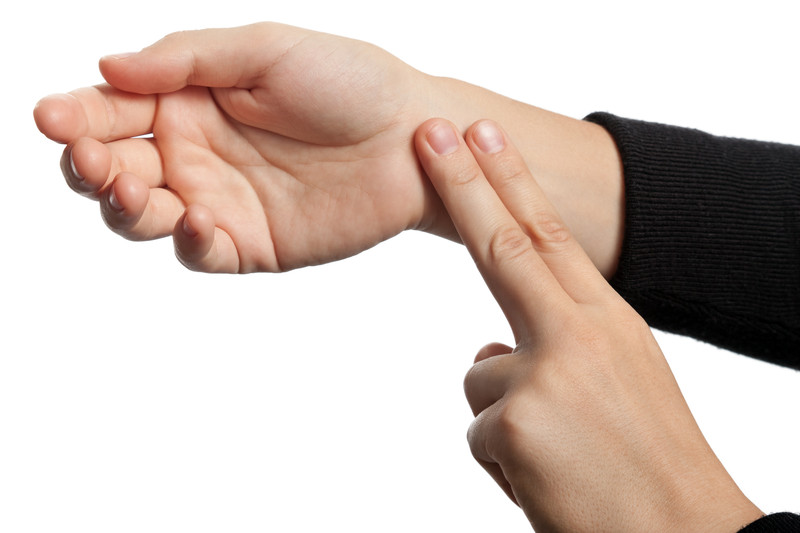Resting Heart Rate: Why Measure it?
 Many coaches go to extreme measures in an attempt to monitor the physical condition of their athletes. The need to ensure the athlete is in the best possible shape both to train and compete has meant that over the years vast sums of money and time have been invested in trying to pinpoint this information. Whether it is through using expensive equipment or time-consuming tests, almost every method imaginable has been tried in order to assess the physical readiness of the athlete to train or perform.
Many coaches go to extreme measures in an attempt to monitor the physical condition of their athletes. The need to ensure the athlete is in the best possible shape both to train and compete has meant that over the years vast sums of money and time have been invested in trying to pinpoint this information. Whether it is through using expensive equipment or time-consuming tests, almost every method imaginable has been tried in order to assess the physical readiness of the athlete to train or perform.
However, there is one particular test that is extremely effective despite the fact that it can be carried out while still in bed and takes less than one minute to perform by the athlete themselves – and that is checking your Resting Heart Rate (RHR). Monitoring your Resting Heart Rate is a very effective method of assessing the fitness level of an athlete and assisting recovery, and in general it is a very reliable indicator of cardiovascular health.
What is Resting Heart Rate?
According to What Is A Resting Heart Rate? Resting Heart Rate (RHR) is defined as
The number of contractions of the heart that occur in a single minute while the body is at complete rest. This number will vary depending upon the age, gender, and general health of a person. There will also be a large difference in the resting heart rate of athletes when compared to non-athletes
The stronger the heart the more blood it is able to pump with each contraction so it does not have to beat as often. Therefore, RHR tells us is that those with a high resting heart rate do not have the same fitness levels as those with a low rate. It is estimated that on average, the RHR should be somewhere between 60 and 80 beats every minute. However, that level will be considerably lower for an athlete and those at the elite level will be in the region of 40 beats. The value of monitoring your RHR in general terms is assessed in Your Resting Heart Rate Is Telling You More Than You Think
Your RHR tells you lots about your cardiovascular health. Having a high RHR is a risk factor independent of other risk factors such as; hypertension, diabetes, and smoking. So paying attention to our RHR while effortless in determining; is important
The article adds that higher rates of RHR can be an indication of a hardening of the arteries and that your heart can wear out at a quicker rate if it is forced to work too hard, and thus it suggests that those with a RHR of over 80 should consult their doctor.
RHR can aid recovery for an athlete
Meanwhile, the monitoring of RHR can be of huge benefit to an athlete as any fluctuation could be an indicator of fatigue, injury or illness problems that might inhibit training and in turn, performance in competition. It is the area of recovery where monitoring RHR is most effective as it can help in identifying cases of fatigue and over-training which allows an athlete to adjust their training programme accordingly and ultimately reach or maintain peak physical condition. In Enhancing Recovery Michael Kellmann reminds us of the importance of monitoring an athlete’s recovery
The overall purpose of assessing recovery is to optimize performance development by balancing training and recovery, thereby simultaneously minimizing the risk of negative consequences of excessive training
The article The Importance of Resting Heart Rate illustrates how RHR is linked to recovery when it points out
A higher resting pulse than usual can be a sign of over-training or illness. When you are recovering from a workout, your metabolism and heart are working harder to repair your body and get it back to a homeostasis. Therefore, if in the morning you have a higher resting heart rate than usual, your body is still in a state of repair and you should adjust your workout regimen accordingly to prevent over-training or injury
This assertion is backed up by John Davis in How Fatigue, Illness, and Overtraining Impact Your Resting Heart Rate and Whether You Can Use this Information to Train Smarter who recognized the problem of over-training
In a healthy runner, the body responds positively to a new stress in training, like increasing your mileage or going further on your long run. But if you’re in a state of overtraining, or “overreaching,” its less-severe cousin, your body rebels against the training stimulus and you feel listless, abnormally sore, irritable, and fatigued
He pointed to a study where a group of cyclists were over-trained for a period and this exertion was reflected in an increased resting heart rate. The study in question was undertaken at the University of Limburg in The Netherlands where seven male cyclists increased the normal rate of their training over a two-week period in order to recreate the symptoms of unintended over-training. It was concluded that at the end of the study the athletes were more fatigued than they had been at the start, while a time trial proved slower at the end of the two weeks than the one taken before training intensified. What is interesting is that the resting heart rate showed an increase from an average of 49 beats to 54 beats per minute. Therefore the study shows the value of monitoring RHR as it may highlight issues that are not obvious and allow for a slight variation in training schedule that could ultimately prove very beneficial.
How do you take your resting heart rate?
What’s even better is that it is very simple to gather this data and can be done first thing in the morning while lying in bed. Use your index finger and third finger when finding a pulse. Don’t use your thumb when finding it, as it has its own pulse. You can find the radial pulse which is the pulse on the inside of your wrist. To do this use your index and 3rd finger as shown in the diagram above. Press lightly until you feel a pulse. You can count these beats over 60 seconds and this will give you your resting heart rate. Alternatively you can count over 30 seconds and multiply by 2 or 15 seconds and multiply by 4. The first beat counts as 0. You should use a stopwatch set to the number of seconds you are using. You can also do this using the carotid pulse which you will find on the side of your neck just below your jaw line. This How to check your pulse article explains this in detail.
There are also a number of apps available on your smart phone which will measure your heart rate. This Best Heart Rate Monitor Apps article explains how this works
Every time the heart sends a pulse of blood through the body, the tiny capillary vessels in the skin expand. When a smartphone’s flash illuminates the skin, its camera can capture the miniscule color changes that happen each time the heart beats
What impacts your resting heart rate?
Many factors can affect your resting heart rate. It is a useful exercise to record your resting heart rate each morning and gain more insight and knowledge into how different factors affect your own readings. Some of the factors that can affect your resting heart rate include:-
- Regular disturbed or insufficient sleep
- Your diet
- Excess stress and anxiety
- Dehydration
- Overtraining
- Smoking
- Carrying additional weight
- Caffeine and other stimulants
It is very valuable to maintain a record of your resting heart rate as it can be a good indicator of your overall health and alert you to any issues in your training and overall lifestyle as well as help you understand your body better. It is worth spending that short time before you get out of bed as it could be the best information your body gives you for the entire day.
What is Metrifit?
Metrifit helps coaches get to know their athletes, and helps athletes get ready to perform. It is a simple, intuitive and effective approach to monitoring looking at how the ‘small picture’ of an athlete’s daily habits, shapes the ‘big picture’ of match day performance.
Whether your use of Metrifit is to have a highly accurate reflection of acute to chronic work-load ratios to make training/competition decisions, to empower student-athletes to be reflective and take charge of their Health & Wellness, or as a basis to engage in conversation with your Student-Athletes thereby demonstrating you care about them as individuals, Metrifit simply works. It meets kids where they reside – on their mobile phones and through technology and is quick, easy, and habit-forming to use.
Why not have a look at our Metrifit Ready to Perform product and gain insight on the physical and mental state of your athletes through our daily wellbeing questionnaire? To find out more visit our Metrifit Product Overview page or contact at for a free demo. You can also register your team and use Metrifit for 14 days for free.
Please share this post so others may benefit.
Follow @metrifit

References
What’s a normal resting heart rate, Edward R. Laskowski, M.D.
The importance of resting heart Rate by Brandon Keller
Your resting heart rate is telling you more than you think
Heart Rate Training: Finding the Right Zone for You
Heart Rate Variability: The New Science of Recovery by Craig Marker
Enhancing Recovery: Preventing underperformance in athetes by Michael Kellman
How to measure your resting heart rate
































 Previous Post
Previous Post Next Post
Next Post





